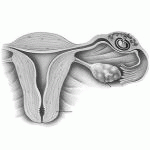Gynaecology
|
23 july 2014 17:36:45 |
| Maternal near-miss and death and their association with caesarean section complications: a cross-sectional study at a university hospital and a regional hospital in Tanzania (BMC Pregnancy and Childbirth) |
|
Tweet Background:
The maternal near-miss (MNM) concept has been developed to assess life-threatening conditions during pregnancy, childhood, and puerperium. In recent years, caesarean section (CS) rates have increased rapidly in many low- and middle-income countries, a trend which might have serious effects on maternal health. Our aim was to describe the occurrence and panorama of maternal near-miss and death in two low-resource settings, and explore their association with CS complications.
Methods:
We performed a cross-sectional study, including all women who fulfilled the WHO criteria for MNM or death between February and June 2012 at a university hospital and a regional hospital in Dar es Salaam, Tanzania. Cases were assessed individually to determine their association with CS. Main outcome measures included MNM ratio; maternal mortality ratio; proportion of MNM and death associated with CS complications; and the risk for such outcomes per 1,000 operations. The risk ratio of life-threatening CS complications at the university hospital compared to the regional hospital was calculated.
Results:
We identified 467 MNM events and 77 maternal deaths. The MNM ratio was 36 per 1,000 live births (95% CI 33-39) and the maternal mortality ratio was 587 per 100,000 live births (95% CI 460-730). Major causes were eclampsia and postpartum haemorrhage, but we also detected nine MNM events and five deaths from iatrogenic complications. CS complications accounted for 7.9% (95% CI 5.6-11) of the MNM events and 13% (95% CI 6.4-23) of the maternal deaths. The risk of experiencing a life-threatening CS complication was three times higher at the regional hospital (22/1,000 operations, 95% CI 12-37) compared to the university hospital (7.0/1,000 operations, 95% CI 3.8-12) (risk ratio 3.2, 95% CI 1.5-6.6).
Conclusions:
The occurrence of MNM and death at the two hospitals was high, and many cases were associated with CS complications. The maternal risks of CS in low-resource settings must not be overlooked, and measures should be taken to avoid unnecessary CSs. More comprehensive training of staff, improved postoperative surveillance, and a more even distribution of resources within the health care system might reduce the risks of CS. |
| 97 viewsCategory: Gynaecology |
 Cost-effectiveness of strategies to improve the utilization and provision of maternal and newborn health care in low-income and lower-middle-income countries: a systematic review (BMC Pregnancy and Childbirth) Cost-effectiveness of strategies to improve the utilization and provision of maternal and newborn health care in low-income and lower-middle-income countries: a systematic review (BMC Pregnancy and Childbirth)Long working hours and pregnancy complications: women physicians survey in Japan (BMC Pregnancy and Childbirth) 
|
| blog comments powered by Disqus |
MyJournals.org
The latest issues of all your favorite science journals on one page
The latest issues of all your favorite science journals on one page



